What are the differences between wheat, rye, oats and barley: photo and comparative characteristics
Many city dwellers can judge about cereals only by bakery and confectionery products, pasta, cereals, cereals and beer made from them. How crops grow, what their features are, how wheat differs from rye or barley, not everyone knows.
Our article will dot the "e" in this topic. Read on to learn more about how these plants, most valuable for life, look, about their composition, useful and harmful properties.
The content of the article
Characteristics of the plant: how it looks, chemical composition, nutritional value
Cereals are divided into cereals (wheat, rye, barley, oats) and millet (millet, corn, sorghum, rice). The first group has winter and spring forms characterized by frost resistance.
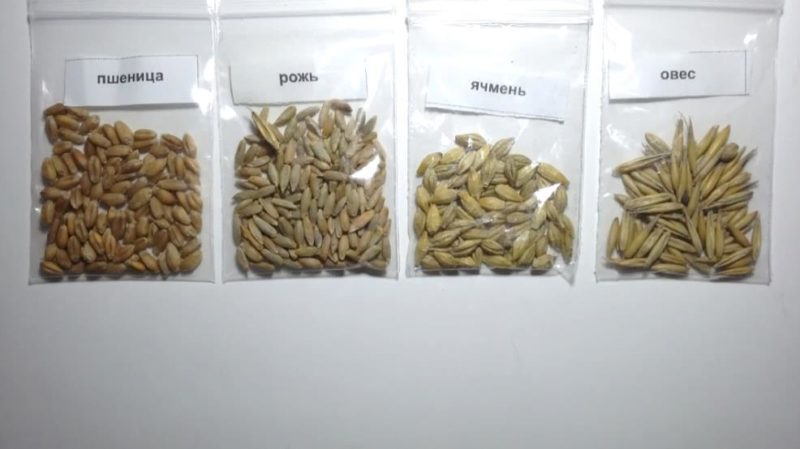
Rye
Cultivated or sown rye is an annual plant of the cereal family. The stem is a straw 60 to 200 cm long with 5-7 internodes. On it there are linear leaves, consisting of a leaf blade 15 to 25 cm long and an abalone at its base, which covers the stem.
The fibrous root system is located in the upper layers of the soil, but in sandy loam soil it can penetrate to a depth of 1.5 m. The inflorescence of rye is a dense, two-row, two-flowered ear. The fruit is an oblong weevil, slightly flattened from the sides.
It is believed that sowing rye comes from a weed-field species that grows in the foothills of the Caucasus, Asia Minor and Central Asia. More productive winter rye is mainly grown in Russia. Spring rye is sown only in Transbaikalia, Yakutia and Central Siberia, where, due to low winter temperatures, winter rye freezes out.
Reference. In the central regions of the Russian Federation, spring rye is used as a safety net in the event of the death of winter crops.
Wheat
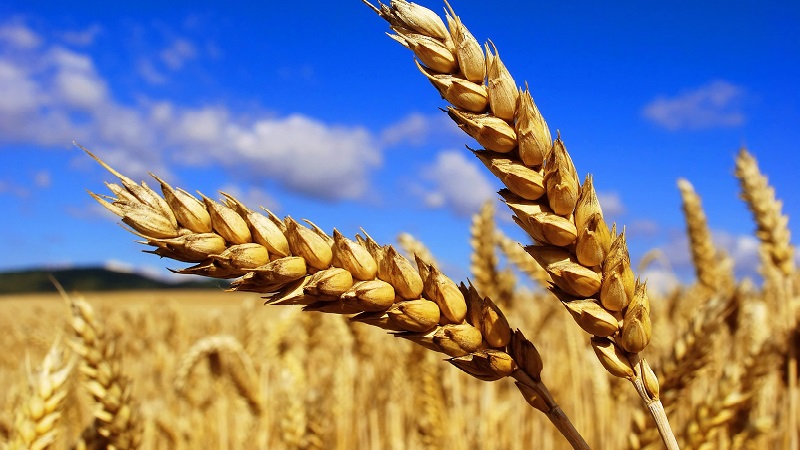
Cultivated wheat - an annual plant of the family cereals (bluegrass) of the monocotyledonous class and unites species belonging to three rows, differing in the number of chromosomes in somatic cells:
- diploid;
- tetraploid;
- hexaploid.
Wheat is also subdivided into hard (species with a hull grain and naked tetraploid series) and soft (hexaploid species).
The stem of the plant is a hollow straw covered with elongated lanceolate leaves. The root system is fibrous. Inflorescence is an oblong, sometimes tetrahedral complex spike with 3-5 flower spikelets placed on its shaft, each of which is wrapped laterally with scales. The fruit is a single-seeded weevil in which a thin pericarp is tightly adhered to the seed coat.
The grain can be mealy or glassy and have a white, red, sometimes purple color.
Reference. Wheat is one of the oldest cultivated cereal plants. On the territory of modern Iran, Turkey and Syria, it was known in 6-5, and on the territory of Russia - in 4-3 millennia BC. e. On the territory of the Russian Federation, mainly spring varieties of soft and durum wheat are grown, and winter crops are grown only in the southern regions.
Oats
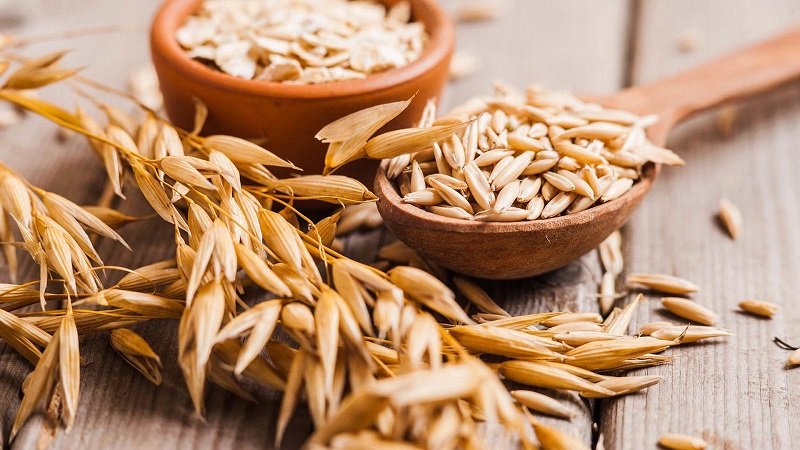
Oats sowing or cultivated - an annual herb of the cereal family, grown as a fodder and partly a cereal crop. The stalk of oats is a straw with a height of 50 to 170 cm, on which linear successive leaves are placed, consisting of a leaf blade and a sheath. The root system is fibrous.Inflorescence is a spreading panicle, consisting of 1-3 flowering or multi-flowered spikelets. The fruit is a weevil.
The northeastern provinces of China and Mongolia are considered the homeland of oats, and in Russia for many centuries oatmeal dishes (oat flour) and oatmeal jelly were an everyday food. Cultivated oats by the type of flower film are divided into chalky and hulless. In Russia, preference is given to a more productive film form.
Reference. The first mention of oat jelly is in the Nestorov Chronicle (The Tale of Bygone Years) - the earliest chronicle text of the early 12th century.
Barley

This one- or perennial plant of the family of cereals has a strawy stem 50 to 110 cm long with linear leaves, a fibrous root system and one-flowered spikelets, three on each ledge of the spike.
In agronomic practice, sowing barley is used, which is divided into 3 subspecies:
- multi-row;
- two-row;
- intermediate.
In Russia, only multi-row and two-row subspecies are sown, using mainly spring varieties. Winter crops are grown in the North Caucasus.
Barley is used as a fodder and food crop (pearl barley and barley groats are produced from grains), and is also used as the main raw material in the brewing industry.
Barley - one of the oldest cultivated plants. It is believed that during the Neolithic period it was introduced into culture in different localities independently of each other.
The chemical composition, nutritional value of cereals, as well as the mass of nutrients contained in 100 g of the edible part are presented in the table:
| Nutritional information and nutrients | Rye | Wheat | Oats | Barley |
| Calorie content (kcal) | 283 | 305 | 316 | 288 |
| Proteins (g) | 9,9 | 11,8 | 10 | 10,3 |
| Fat (g) | 2,2 | 2,2 | 6,2 | 2,4 |
| Carbohydrates (g) | 55,8 | 59,5 | 55,1 | 56,4 |
| Fiber (g) | 16,4 | 10,8 | 12 | 14,5 |
| Water (g) | 14 | 14 | 13,5 | 14 |
| Ash (g) | 1,7 | 1,7 | 3,2 | 2,4 |
| Vitamins (mg) | ||||
| Beta Carotene | 0,02 | 0,01 | 0,02 | — |
| IN 1 | 0,44 | 0,44 | 0,47 | 0,33 |
| AT 2 | 0,2 | 0,15 | 0,12 | 0,13 |
| AT 4 | 30,4 | — | 110 | 110 |
| AT 5 | 1 | 0,85 | 1 | 0,7 |
| AT 6 | 0,41 | 0,38 | 0,26 | 0,47 |
| E | 2,8 | 3 | 1,4 | 1,7 |
| RR, NE | 3,5 | 7,8 | 4 | 6,5 |
| Niacin | 1,3 | 5,3 | 1,5 | 4,5 |
| Macronutrients (mg) | ||||
| Potassium | 424 | 337 | 421 | 453 |
| Calcium | 59 | 54 | 117 | 93 |
| Silicon | 85 | 48 | 1000 | 600 |
| Magnesium | 120 | 108 | 135 | 150 |
| Phosphorus | 366 | 370 | 361 | 353 |
| Trace elements | ||||
| Iron (mg) | 5,4 | 5,4 | 5,5 | 7,4 |
| Manganese (mg) | 2,77 | 3,76 | 5,25 | 1,48 |
| Zinc (mg) | 2,04 | 2,79 | 3,61 | 2,71 |
| Cobalt (mcg) | 7,6 | 5,4 | 8 | 7,9 |
| Copper (mcg) | 460 | 470 | 600 | 470 |
| Molybdenum (mcg) | 18 | 23,6 | 39 | 13,8 |
| Selenium (mcg) | 25,8 | 29 | 23,8 | 22,1 |
The chemical composition of these crops varies depending on the variety, soil and climatic conditions, fertilizers, predecessors and growing methods.
What are the similarities and differences between rye, wheat, oats and barley
Despite the family relationship, cereals differ greatly in both morphological and biological properties.
In appearance
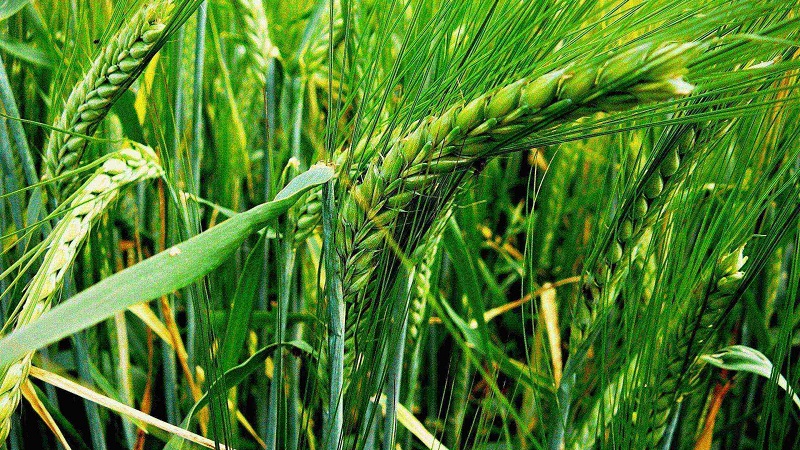
All four plants have the following similarities:
- fibrous root system;
- stalk in the form of a hollow straw, branching in the lower part (tillering node);
- linear or linear-lanceolate leaves;
- small bisexual flowers, collected in multi-flowered spikelets, forming a complex ear or panicle at the top of the stem;
- fruits are caryopsis.
However, there are differences between these cereals:
- rye has the highest stems;
- before ripening, rye has a pale green color, and wheat, depending on the variety, is pink-red or bluish;
- before the spike is thrown out, the reverse side of the junction of the leaf with the stem has a "tongue" in oats, while barley has two "ears" at the point of attachment;
- an ear of rye and durum wheat always has vertical awns, and in soft wheat the awns are scattered both upward and on the sides (there are varieties of non-resistant soft wheat);
- in undersized barley, spikelets have a toothed awn, and taller oats, unlike other cereals, have an inflorescence in the form of a panicle;
- elongated oval rye grain with a "beard";
- in barley - wide, flattened from the sides (after threshing it remains in scales);
- oatmeal covered with soft, appressed hairs, elongated, with a tuft and groove, pointed at the end;
- wheat grains, due to the huge variety of species and varieties, have different sizes and shapes, but usually in soft wheat they are short with a tuft (round, semi-vitreous or mealy at the break), and in hard varieties, the grains are elongated with a weakly expressed tuft or without it (on fracture angular, glassy).
Cereals include triticale, a viable hybrid (amphidiploid) of wheat and rye.
By properties
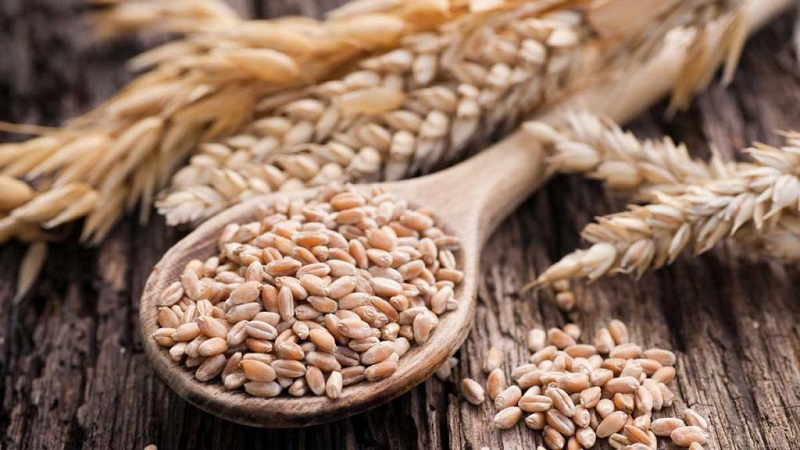
Rye, wheat, barley and oats are considered to be crops of northern origin that require long daylight hours in the summer, which go through the same phenological phases during the growing season:
- germination;
- tillering;
- shooting;
- earing;
- bloom;
- maturation.
However, for the full development of each of the cereals, certain climatic conditions and soil composition are required.
Due to the developed root system, rye is not demanding on the composition of the soil and grows well on light sandy soil, while it assimilates well the useful elements necessary for development, even from hardly soluble substances.
Winter rye is more frost and winter hardy, and also less demanding on moisture than wheat. With appropriate hardening of plants in autumn, this cereal crop, depending on the variety, can withstand temperatures from -27 to -35 ° C.
Wheat has been cultivated earlier and has more varieties than rye. It also surpasses this crop several times in yield. But when growing both durum and soft wheat, in contrast to rye, special agronomic conditions are required:
- soils should be black earth or podzolic with neutral or low acidity;
- wheat is less resistant to diseases and lodging, poor resistance to weeds;
- hard winter wheat is less winter-hardy, and soft spring wheat is more demanding on irrigation (its regularity and abundance).
Oats - a culture of a temperate climate... It is not picky about heat and soil conditions, but it is hygrophilous (intensive irrigation is required during the booting period). To obtain maximum yields, the temperature during seed germination should be 12-16 ° C, and for the formation of generative organs and fruiting - 16-22 ° C. The optimum acidity of the soil is pH 5-7.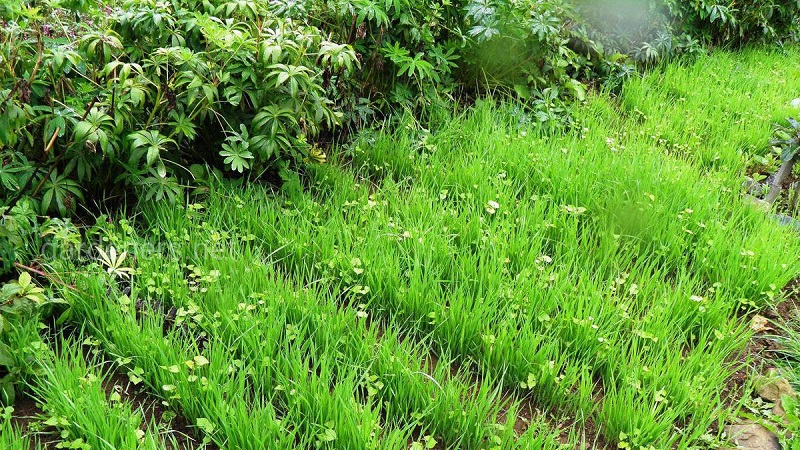
In comparison with other cereals, spring barley has a shortened growing season under conditions of long daylight hours and is considered the most resistant to frost and heat among other cereals.
Barley seedlings successfully tolerate short-term frosts down to -10 ° C, so it ripens faster in the northern regions, but gives the best yields in the southern and southeastern regions.
Useful properties for the body of rye, wheat, oats and barley
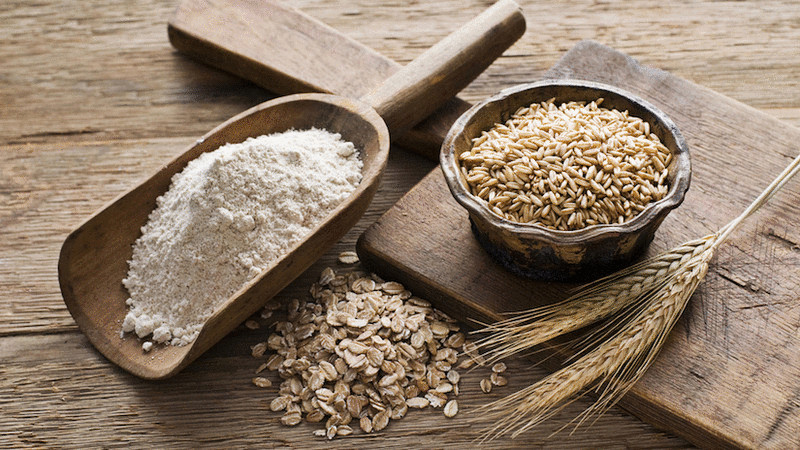
Sprouted wheat is the most useful - it carries a huge energy potential, improves immunity and cleanses the body of toxins due to its high content of B vitamins, antioxidants and trace elements.
Oatmeal in combination with fruits, nuts or milk, preserves the strength of bones, strengthens blood vessels and relieves atherosclerosis. The use of decoctions from grains helps in the treatment of impotence and infertility.
The healthiest element in barley - indigestible fiber. Porridge and soups are useful for losing weight, with psoriasis, pyoderma and eczema, and a slimy broth - for intestinal diseases.
What's more useful
Rye, according to nutritionists, is the healthiest of all cereals. At the lowest calorie content, it contains the most balanced content of vitamins, macro- and microelements.
In folk medicine, whole and sprouted grains are used to treat diseases of the stomach, genitourinary and cardiovascular systems, diabetes mellitus, and colds.
Harm and contraindications to the use of rye, wheat, oats and barley
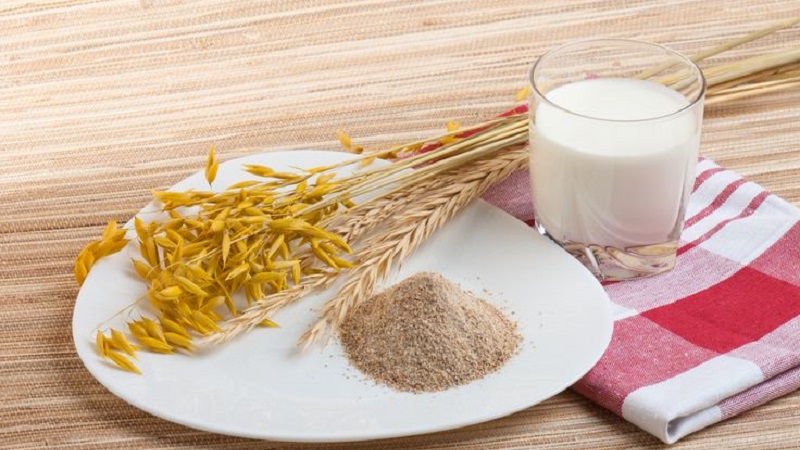
Wheat dishes are not recommended for ulcerative colitis, hyperfunction of the endocrine glands, diabetes mellitus.
Oats have no contraindications, but in case of renal and heart failure, it is better not to use it.
Barley porridge is not recommended for children under two years of age.
Rye bread and bran are contraindicated during an exacerbation of gastritis, as well as for patients with stomach ulcers.
What is more harmful
To say that some of the cereals is more harmful is fundamentally wrong.Less useful are processed products and products from them (for example, semolina and instant oatmeal).
Gluten (a hidden allergen), which is found in all these cereals, is a serious danger for people with individual intolerance.
Conclusion
Cereals have both biological and morphological differences, but the most important factor for humans is the factor that unites them. Rye, wheat, oats and barley are cultivated plants that provide the main foodstuff - grain, animal feed and raw materials for many industries.